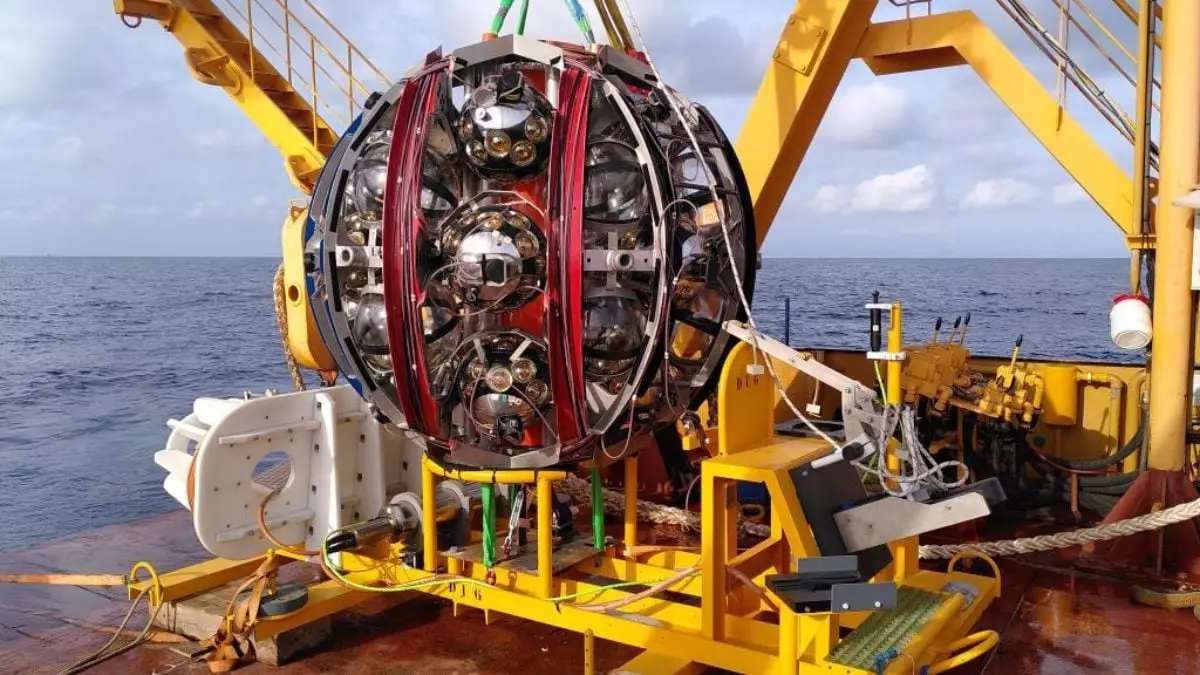The KM3NeT (Cubic Kilometer Neutrino Telescope) project is pushing the boundaries of astrophysical research by deploying innovative underwater telescopes in the Mediterranean Sea. This ambitious initiative is focused on detecting elusive high-energy neutrinos, tiny particles that are notorious for their ability to traverse vast distances without interacting with matter. Unlike conventional telescopes that observe celestial bodies through electromagnetic radiation, KM3NeT captures the faint flashes of light produced when these neutrinos collide with the molecules in seawater.
The KM3NeT project involves the construction of two distinct telescopes, each uniquely designed to serve different scientific objectives. Both telescopes utilize glass spheres filled with photomultiplier tubes, devices that amplify the light signals resulting from neutrino interactions. According to physicist Simone Biagi from Italy’s National Institute for Nuclear Physics, these telescopes are situated several kilometers beneath the ocean’s surface, making their deployment a complex engineering feat.
In total, the project requires the installation of hundreds of detector strings that resemble long strands of pearls. Each string can extend up to 700 meters, creating an expansive detection area that spans one cubic kilometer of the Mediterranean seabed. The precise deployment of these structures is crucial, and a remotely operated submersible assists in ensuring that each connection is correctly established.
KM3NeT is carving out a significant role in advancing our understanding of both astrophysical phenomena and fundamental physics. One of the telescopes, positioned off the coast of Sicily, is tasked with observing high-energy neutrinos emanating from deep space. Meanwhile, the second telescope, located near France’s coast, is specifically aimed at studying atmospheric neutrinos and the oscillations that occur between their different forms. These oscillations offer critical insights into the properties of neutrinos and their interaction with other particles, a topic of growing interest within the realm of particle physics.
The project embodies international collaboration, drawing on expertise from scientists across Europe and beyond. However, operatives on the project must contend with substantial hurdles, including harsh maritime conditions and tight operational timelines. Deployment campaigns are meticulously planned to last about a month each year, during which the research teams must work under intense pressure to assure the flawless operation of all equipment.
Interestingly, even in its partially completed state, KM3NeT is already providing valuable scientific data. Initial findings are contributing to fresh inquiries into phenomena such as quantum gravity and the intrinsic properties of neutrinos, thus expanding the horizons of contemporary physics. Each success serves to underscore the potential advancements that full deployment of the KM3NeT can yield, offering a glimpse into the universe’s hidden mechanisms.
The challenges faced by KM3NeT researchers are monumental, yet their resolve under such demanding circumstances is a testament to the significance of their work. As scientists continue to unravel the mysteries encapsulated within the neutrino enigma, projects like KM3NeT stand as beacons of innovation in the quest for deeper cosmological understanding.

Leave a Reply